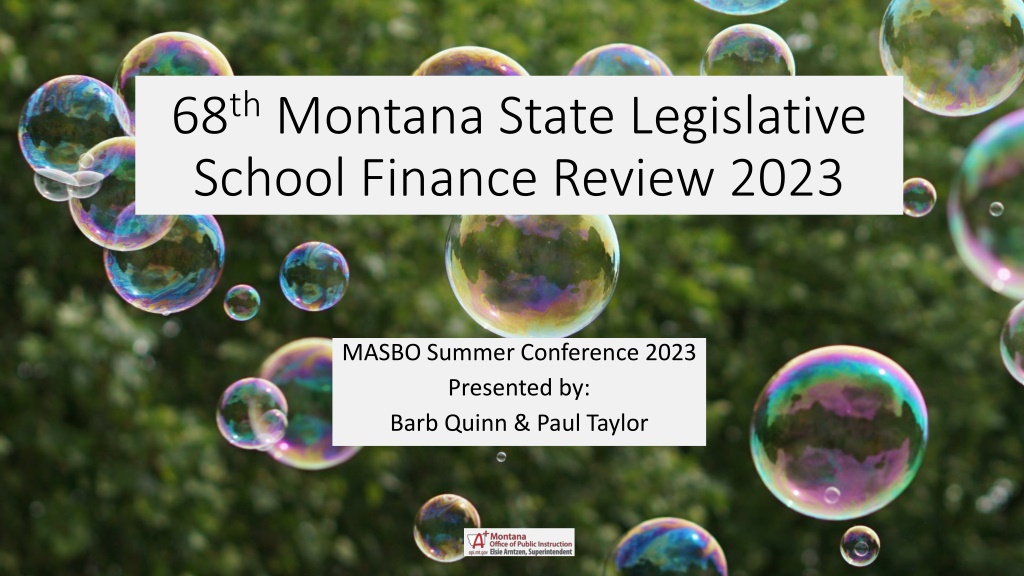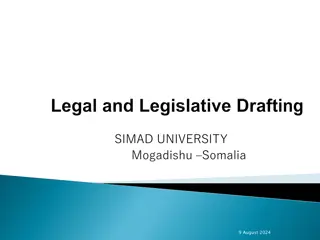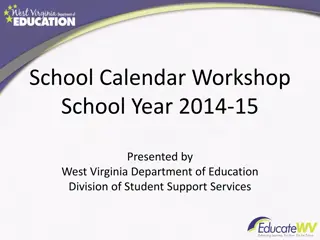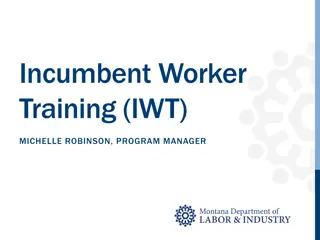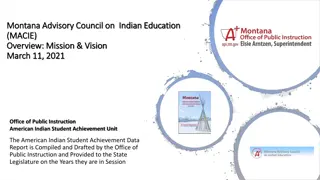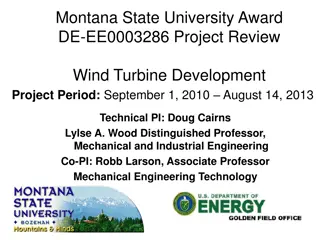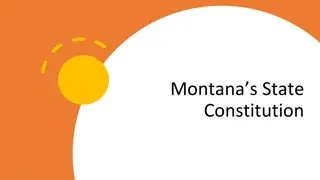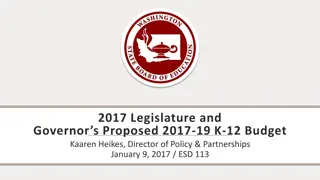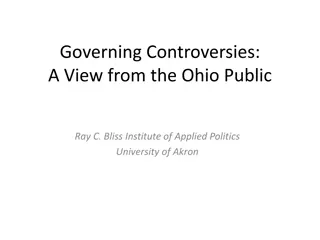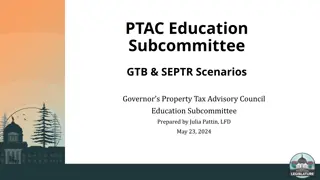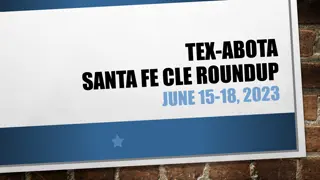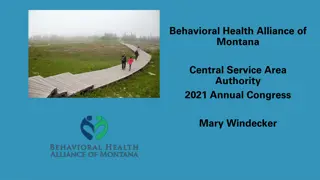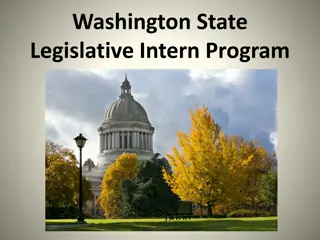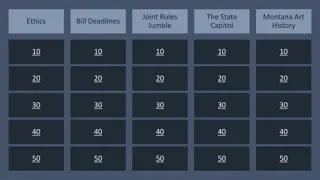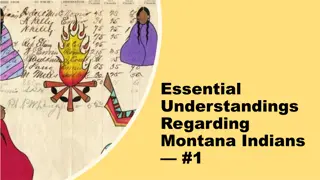Montana State Legislative School Finance Review 2023
The 68th Montana State Legislative School Finance Review for 2023 was presented at the MASBO Summer Conference by Barb Quinn and Paul Taylor. The presentation covers various bills related to public school funding and finance, including long-range building appropriations, K12 Base Aid increases, and revisions to school funding laws concerning enrollment increases. Specific details and implementation of new laws will be provided as they come into effect.
Uploaded on Jul 01, 2024 | 0 Views
Download Presentation

Please find below an Image/Link to download the presentation.
The content on the website is provided AS IS for your information and personal use only. It may not be sold, licensed, or shared on other websites without obtaining consent from the author. Download presentation by click this link. If you encounter any issues during the download, it is possible that the publisher has removed the file from their server.
E N D
Presentation Transcript
68thMontana State Legislative School Finance Review 2023 MASBO Summer Conference 2023 Presented by: Barb Quinn & Paul Taylor
Disclaimer The Montana OPI school finance division has prepared this presentation in attempt to provide a general overview of bill/laws specific to public school funding and finance. There are many other bills that passed into law during the 2023 legislative session that are not covered in this presentation. Due to the high-level nature of this presentation and the delayed effect of many bills make it prohibitive to provide specific details that will be organized and provided once implementation takes place for many of the new laws. 2
Long-range building appropriations Specific to public school districts, HB 5 appropriates $3.7 million to the department of environmental quality (DEQ) for grants to reduce exposure to lead in drinking water at school facilities. HB 5 1 of 1 3
Increase K12 BASE aid HB 15 provides inflationary increases of 2.70 percent for FY 2024 and 3.00 percent for FY 2025 to the funding components of school district general fund budgets. The increases are applied to the: basic and per ANB entitlements, Special education allowable cost payment, Quality educator payment, Indian education for all payment, At risk student payment, American Indian achievement gap payment, Data for achievement payment HB 15 1 of 1 4
Revising school funding laws related to enrollment increases HB 36 repeals 20-9-314, MCA, which provides procedures for determining eligibility and amount of increased ANB due to unusual enrollment increase. The bill also removes statutory references to sections 20-3-106, 20-9- 141, 20-9-308, and 20-9-313, MCA and modifies section 20-9-166, MCA, to allow significant enrollment increase (SEI) payments. HB 36 1 of 4 5
Revising school funding laws related to enrollment increases In general, the SEI payment eligibility process is described in the bill as follows: School districts that experience an enrollment increase based on the October enrollment count in the current year converted to ANB must be greater than the budget limitation ANB for the fiscal year three years prior by 10%. The Office of Public Instruction (OPI) must determine by December 1st each year following the October enrollment count the school districts that qualify for a SEI payment. OPI must notify schools by December 15th of each year of their eligibility for an SEI payment. HB 36 2 of 4 6
Revising school funding laws related to enrollment increases The SEI payment is described in this bill as an amount that is the difference between 80% of the district s total per-ANB entitlement for that fiscal year using the most current October enrollment count minus the absorption factor , and 80% of the district s initial per-ANB entitlement for that fiscal year. Absorption factor is defined as an ANB amount rounded to the nearest whole number equal to the sum of 5 ANB plus 3% of the district s budget limit ANB for that fiscal year. HB 36 3 of 4 7
Revising school funding laws related to enrollment increases The trustees of a SEI payment qualifying district are to notice OPI of acceptance of all or partial amount of the allowable SEI payment no later than March 1st. A school district general fund budget amendment must be provided to the OPI and, upon successful completion of the budget amendment process, the OPI is to begin distribution of the SEI payments using appropriation authority from the BASE aid appropriation in HB 2 in the following months that direct state aid is distributed to schools by OPI. HB 36 4 of 4 8
Generally revise education laws to enhance educational opportunities Applicability of this bill applies to Budgets and Calculations of FY2025 HB 203 revises education laws related to students who attend school out of district and the associated tuition, out-of-district attendance choice, and assures taxpayer equity. HB 203 changes section 20-5-320, MCA, amending the title to, out-of- district attendance by parent or guardian request with no extenuating circumstances, and makes the following additional amendments. HB 203 1 of 9 9
Generally revise education laws to enhance educational opportunities Changes include that, a child may enroll and attend a district that is the non-resident district at the request of the parent or guardian with approval of the trustees of the intended district of attendance. That the parents or guardians may be responsible for transportation of the child to the non-located district of attendance unless the district of attendance discretionarily provides transportation pursuant to 20-10- 122, MCA. HB 203 2 of 9 10
Generally revise education laws to enhance educational opportunities Students of the resident district and those seeking enrollment under the 20-5-321, MCA, or attendance with mandatory approval are to be enrolled first, then afterward students may be enrolled under the provisions of section 20-9-320, MCA but only if the following criteria are not of concern: HB 203 3 of 9 11
Generally revise education laws to enhance educational opportunities The approval would result in exceeding limits if (paraphrased from the bill): building construction standards pursuant to Title 50, chapter 60. capacity and ingress and egress elements, either by individual room or by school. building, of any fire code authorized by Title 50, chapter 3. evacuation elements of the district s adopted school safety plan. truant as defined in 20-5-106 in the last school district attended. expelled by another school district. the trustees of a district that receives more applications than the district can accommodate. HB 203 4 of 9 12
Generally revise education laws to enhance educational opportunities Children seeking enrollment in a non-located district are obligated to the tuition requirements under 20-5-323 & 20-5-324, MCA. Section 20-5-321, MCA, or attendance with mandatory approval is amended to strike language associated with the discretion to waive tuition, resulting in the requirement of students seeking attendance with mandatory approval will require mandatory tuition payments. Section 20-5-322, MCA, is modified so that the district of attendance is required to notify the district of residence, the county of attendance, the county of residence and the superintendent of public instruction should the attendance agreement be accepted. If disapproved there may be appeal to the county superintendent and then to the superintendent of public instruction. HB 203 5 of 9 13
Generally revise education laws to enhance educational opportunities Section 20-5-323, MCA, or the calculation tuition and transportation rates is modified so that the district of residence shall pay the district of attendance a calculated amount of mandatory tuition. This amount is to be a percentage equal to the lesser of the percentage of either school district's adopted general fund budget funded by BASE and over-BASE property tax levies in the year of attendance not to exceed 35.3%. This section is additionally amended to modify the tuition per-ANB amount by removing the data for achievement payment rate under 20-9-306 and the Indian education for all payment rate under 20-9-306 for its calculation. HB 203 6 of 9 14
Generally revise education laws to enhance educational opportunities Section 20-5-324, MCA, or tuition payment provisions is modified so that when a child enrolls outside the resident district under sections 20-5-320 or 20-5-321, MCA, associated tuition is to be considered anticipated revenue in the BASE of the district s general fund. Should the amount anticipated exceed the limit of the BASE area the remainder is to be placed in the over-BASE portion of the district s general fund. It is further stated that the anticipated tuition revenue is to not affect BASE mills associated with the calculation of general fund GTB. HB 203 7 of 9 15
Generally revise education laws to enhance educational opportunities The superintendent of public instruction shall report annually to the education interim committee on out-of-district attendance under 20-5- 320 through 20-5-324, MCA, in the prior school fiscal year. HB 203 8 of 9 16
Generally revise education laws to enhance educational opportunities Section 20-9-141, MCA, or the computation of general fund net levy requirement by county superintendent is modified for the following, if applicable, subtracting the result of dividing any tuition payments for out-of-district pupils to be received under the provisions of 20-5-320 through 20-5-324, MCA, except the amount of tuition received for a pupil who is a child with a disability in excess of the amount received for a pupil without disabilities, as calculated under 20-5-323(2), MCA, that are available for reduction of the district's BASE budget levy by the current total taxable valuation of the district, as certified by the department of revenue under 15-10-202, MCA, divided by 1,000. HB 203 9 of 9 17
Increase business equipment tax exemption As a general overview, HB 212 increases the class eight business equipment tax exemption from $300,000 to $1,000,000 provided for in 15-6-138(4), MCA. Additionally, HB 212 provides a reimbursement to school districts by increasing the district general fund guaranteed tax base aid (GTB) multiplier in 20-9-366, MCA, by setting the multiplier percentage at 254% in FY2024 and increasing the multiplier to 259% in FY 2025. HB 212 1 of 1 18
Revise education laws related to remote instruction HB 214 creates definitions to distinguish in person offsite instructional settings and remote instruction. The bill also revises related definitions and statutes, including remote instruction for out-of-district students as a circumstance for mandatory attendance agreements under certain conditions providing fractional enrollment for ANB calculations when a student is enrolled in multiple school districts. HB 214 1 of 9 19
Revise education laws related to remote instruction Section 20-1-101, MCA, is a definitions section and is modified for the following: Section 20-1-101(5), MCA, defines ANB, as including pupils physically attending a school or an offsite instructional setting or receiving remote instruction. Section 20-1-101(13) defines Minimum aggregate hours, is addressed to include remote instruction within its definition. HB 214 2 of 9 20
Revise education laws related to remote instruction Section 20-1-101(14) defines offsite instructional setting as modified to include settings that are an extension of a school of the district, located apart from the school, and that only in-person pupil instruction is considered. It is further clarified that a district shall comply with any rules adopted by the board of public education that specify standards for the provision of educational services at an offsite instructional setting. HB 214 3 of 9 21
Revise education laws related to remote instruction Section 20-1-101, MCA, is modified to include item (21) to define remote instruction as follows: Remote instruction" means pupil instruction that occurs through virtual learning processes incorporating distance and online learning methods that best prepare pupils to meet desired learning outcomes as authorized in 20-7-118, MCA. Section 20-1-101, MCA, is modified to include item (24) to define a school of the district or a school in the district to mean an accredited school operated by the district that is located within the boundaries of the district operating the school. HB 214 4 of 9 22
Revise education laws related to remote instruction Section 20-3-363, MCA, or laws defining multidistrict agreements is amended to clarify that the agreement may include the following: A multidistrict agreement may include an agreement through which one district provides culturally rooted instruction aligned to a learning environment for English language learners or an Indian language immersion program to pupils of a district participating in the multidistrict agreement. The costs and other terms of service must be reflected in the multidistrict agreement. HB 214 5 of 9 23
Revise education laws related to remote instruction Section 20-7-118, MCA, is amended to describe remote instruction as including the provision of services through electronic means and that the district will comply with any rules adopted by the board of public education. The section also identifies that remote instruction is permitted where the student: meets the residency requirements for that district as provided in 1-1- 215, MCA. lives in the district and is eligible for educational services under IDEA. HB 214 6 of 9 24
Revise education laws related to remote instruction (1)(c) Seeking remote instruction in the nearest district when the pupil's district of residence does not provide remote or in-person instruction in an equivalent course. A course is not equivalent if the course does not provide the same level of advantage on successful completion, including but not limited to dual credit, advanced placement, and career certification. (2)(c) A school of a district providing remote instruction shall provide remote instruction to an out-of-district pupil under subsection (1)(c) unless, because of class size restrictions, the accreditation of the school would be adversely impacted by providing remote instruction to the pupil. HB 214 7 of 9 25
Revise education laws related to remote instruction Section 20-9-311(4)(e), MCA, is the calculation of ANB and is amended to include the following: A pupil in kindergarten through grade 12 who is concurrently enrolled in more than one public school, program, or district may not be counted as more than one full-time pupil for ANB purposes. When a pupil is concurrently enrolled in more than one district, any fractional enrollment under subsection (4)(a) must be attributed first to a pupil's nonresident district. HB 214 8 of 9 26
Revise education laws related to remote instruction An additional amendment to section 20-9-311(8), MCA is to clarify the superintendent s approval for determining the calculation of a separate budget unit associated with the transportation of students. It is clarified that the superintendent s approval be limited to those that are associated with geographical barriers, rather than the more general term currently used which states conditions. HB 214 9 of 9 27
Revise education laws related to advanced opportunities program HB 257 modifies the funding formula for advanced opportunities aid payments to K-12 school districts as follows: Elementary districts qualify for 4.5% of the district s prior year total quality educator payment. Previously was set at 3% High school districts qualify for 30% of the district s prior year total quality educator payment. Previously was set at 20% K-12 districts qualify for 18% of the district s prior year total quality educator payment. Previously was set at 8.5% HB 257 1 of 3 28
Revise education laws related to advanced opportunities program Additional amendments include modification on the limit for the number of districts who qualify for advanced opportunities aid to now be based on the appropriation however distributions continue to be limited to the total appropriation authority. The percent of a district's annual distribution of advanced opportunity aid to be spent to address a pupil s out-of-pocket costs adjusts from 60% to 75%. HB 257 2 of 3 29
Revise education laws related to advanced opportunities program Language is expanded for permissible district expenditures of these funds to include; costs of participation for qualifying pupils in out-of- school enrichment activities that, in the discretion of the trustees, advance the pupil's opportunity for postsecondary career and educational success. HB 257 3 of 3 30
Revise laws related to Indian Education for All Section 20-9-329, MCA, or the Indian education for all payment is amended to require that, in addition to the expenditure reporting of Indian education for all expenditures additional reporting requirements are to include the following detailed descriptions: the instruction provided to certified personnel and students as required under 20-1-503, MCA; and how this instruction was developed cooperatively with the advice and assistance of Montana tribes pursuant to Title 20, chapter 1, part 5. HB 338 1 of 2 31
Revise laws related to Indian Education for All It is further specified that a school district(s) that fails to file the annual report required is ineligible for Indian education for all funding for subsequent school fiscal years until the report is filed. If a school district files a report failing to show that all funds received under this section were spent for the purposes of the requirements of Indian education for all the school district's BASE budget and funding under this section for the subsequent fiscal year must be reduced by the amount of funding received that was not spent for the purposes of Indian education for all. HB 338 2 of 2 32
Revise the tribal computer programming scholarship program HB 346 amends section 20-7-106, MCA, redirecting the administration of the Tribal Computer Programming Boost Scholarship program from the Office of Public Instruction (OPI) to the Department of Labor & Industry (DLI). Under current law, high school technology teachers currently employed or under contract for employment in a high school located on an Indian reservation or a high school serving members of the Little Shell Chippewa tribe are eligible for the scholarships provided under this section of statute. HB 346 1 of 1 33
Provide targeted interventions to support 3rd grade reading proficiency The first purpose of this legislation is to provide parents with a voluntary early literacy interventions program that would increase the number of children who are reading proficient at the end of third grade. HB 352 establishes an Early Literacy Targeted Intervention program beginning July 1, 2024, with an appropriation of $1.5 million for FY 2025. The funding appropriated must be used for per-student costs of the home-based early literacy program created in the bill. HB 352 1 of 8 34
Provide targeted interventions to support 3rd grade reading proficiency HB 352 directs the Board of Public Education, the OPI, and school district trustees to implement and achieve the purposes of this bill by July 1, 2024. These entities are directed to collect, analyze, and report outcomes on an ongoing basis providing continual refining of interventions to increase efficacy and efficiency of each intervention. HB 352 2 of 8 35
Provide targeted interventions to support 3rd grade reading proficiency HB 352 identifies early literacy targeted intervention to mean any of the following: a classroom-based early literacy program a home-based literacy program, or an early literacy jumpstart program Early literacy interventions are defined in the bill allowing that a school district may provide eligible children with any of the interventions described in HB 352. HB 352 3 of 8 36
Provide targeted interventions to support 3rd grade reading proficiency Funding for the early literacy targeted interventions is defined in the bill as follows: An eligible child participating in a classroom-based program must be counted in the enrollment count used for calculating ANB per 20-9-311, MCA. An eligible child participating in a home-based program as defined in the bill may receive not more than $1,000 per year. If the appropriated funding is not sufficient to fund all children participating in the home- based program in any year, the superintendent is to limit participation on a first-come, first-served basis. HB 352 4 of 8 37
Provide targeted interventions to support 3rd grade reading proficiency An eligible child participating in a jumpstart program would be counted as quarter-time enrollment in the calculation of ANB per 20-9- 311, MCA, for participation in the jumpstart program. This could mean this child could be counted as up to 1.25 in the enrollment count for ANB purposes if the child was also enrolled in school. HB 352 5 of 8 38
Provide targeted interventions to support 3rd grade reading proficiency HB 352 directs schools offering an early literacy targeted intervention program to closely monitor and work in collaboration with the Superintendent of Public Instruction and report annually to OPI the efficacy of the program no later than July 15. The superintendent is to report annually to the Interim Budget Committee no later than September 1. HB 352 6 of 8 39
Provide targeted interventions to support 3rd grade reading proficiency A second purpose of this legislation is to clarify both exceptional circumstances and kindergarten and preschool eligibility. Exceptional circumstances are defined in this bill where current law has not had a definition. Section 6, 20-7-117, MCA, currently describes kindergarten and preschool programs. This bill deletes language allowing trustees to include children who have been enrolled by special permission and redefines the allowance to include children who have been admitted through the exceptional circumstances provisions un 20-5-101 , MCA, which is newly defined in this bill. HB 352 7 of 8 40
Provide targeted interventions to support 3rd grade reading proficiency A kindergarten program is defined to mean a half-time or full-time 1- year program immediately preceding a child s entry into 1st grade with curriculum and instruction selected by the Board of Trustees and aligned to the content standards established by the Board of Public Education. A preschool program is defined to mean a half-time or full-time program to prepare children for entry into kindergarten and governed by standards adopted by the Board of Public Education. HB 352 8 of 8 41
Increase penalties for passing school buses HB 366 amends section 61-8-351, MCA, to increase the penalties for illegally passing a school bus that has stopped on the roadway or street to receive or discharge school children and has its flashing red lights operating. The section is also amended in association with penalties for a person found to be guilty of violating the law as follows: HB 366 1 of 2 42
Increase penalties for passing school buses for a first offense, a fine of not less than $500 or more than $1,000, a sentence of community service of not less than 50 hours or more than 100 hours, or both; for a second offense, a fine of not less than $2,000 or more than $3,000, a sentence of community service of not less than 100 hours or more than 200 hours, or both; and for a third or subsequent offense, a fine of not less than $5,000 or more than $10,000, as sentence of imprisonment for a term of not less than 30 days, or both. HB 366 2 of 2 43
Establish the Students with Special Needs Equal Opportunity Act HB 393 establishes a special needs equal opportunity education savings account program for qualified students. A qualified student must be between the ages of 5 and 18 (inclusive) who was counted during the previous school year for ANB funding. The student must also be identified as a student with a disability under the Individuals with Disabilities Education Act, 20 U.S.C. 1400, et seq. HB 393 1 of 10 44
Establish the Students with Special Needs Equal Opportunity Act HB 393 directs the Superintendent of Public Instruction to notify the resident district of the qualifying student amount to be distributed by the resident district to the Montana special needs equal opportunity education savings account on behalf of the qualifying student. HB 393 2 of 10 45
Establish the Students with Special Needs Equal Opportunity Act The Educational Savings Account (ESA) amount is calculated as the sum of: Data for achievement payment (Data) under 20-9-306, MCA Indian Education for All payment (IEA) under 20-9-306, MCA Per-ANB amounts of the instructional (IBG) and related services (RSBG) block grants under 20-9-321, MCA and Per-ANB entitlement amount under 20-9-306, MCA, multiplied by the ratio of school district adopted budget to district maximum general fund budget. HB 393 3 of 10 46
Establish the Students with Special Needs Equal Opportunity Act HB 393 requires 95% of the money to be deposited in a private purpose trust fund to be used for participating students and 5% of the money to be deposited in the Special Needs Education Savings state special revenue account established in the bill for the Office of Public Instruction (OPI) administration of the program. HB 393 creates a special needs equal opportunity education savings trust fund that is to be an instrumentality of the state and created for a public purpose. The funds are to be used by OPI to develop a separate trust for each participating student. HB 393 4 of 10 47
Establish the Students with Special Needs Equal Opportunity Act Money deposited into a Montana Special Needs Education savings account may be used on behalf of a student for tuition, fees, software, instructional materials, and a wide range of both curricular and extracurricular services. The account can also be used to pay tuition, books, online courses, or other fees for postsecondary institutions. Funds from the educational savings account may not be spent by the student for computer hardware, other technological devices, or transportation unless specific to the allowable costs outlined in section 5 of HB 393. HB 393 5 of 10 48
Establish the Students with Special Needs Equal Opportunity Act Requirements indicate that a parent must notify the Superintendent of Public Instruction in the fall and again in the spring that their child would qualify for the education savings account. The parent signs the contract assurances listed in HB 393. Each parent is required to submit to the Superintendent of Public Instruction copies of all expense receipts and account statements related to the savings account. HB 393 6 of 10 49
Establish the Students with Special Needs Equal Opportunity Act The Superintendent of Public Instruction must make information about the program available, conduct audits of accounts, remove parents who do not comply with the contract, and suspend accounts where applicable. The Superintendent of Public Instruction collects quarterly reports of services provided to qualified students from qualified schools who enroll students participating in the Special Needs Equal Opportunity Education Savings Account Program. HB 393 7 of 10 50
